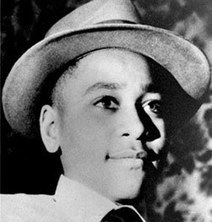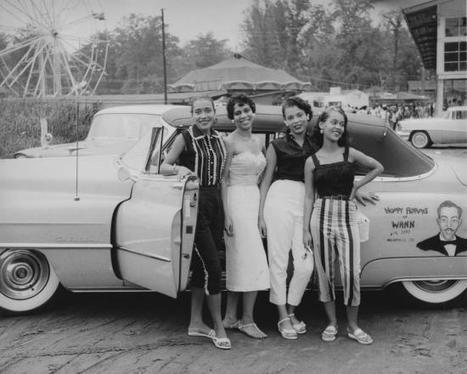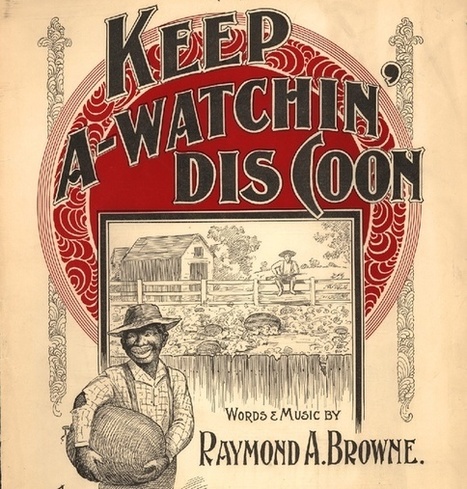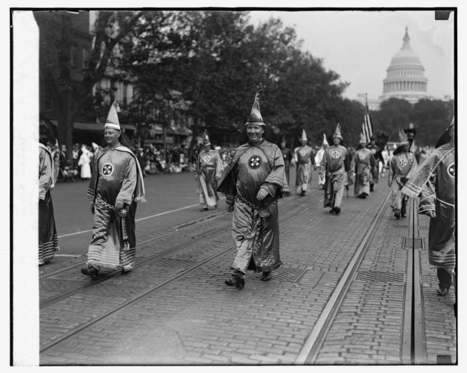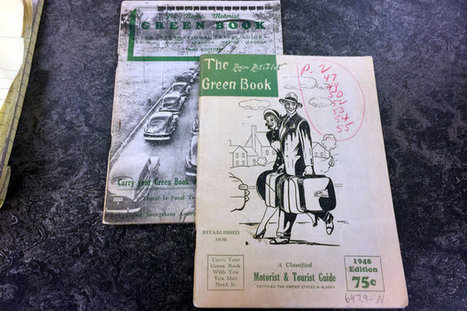NAZI RACIAL SCIENCE INTRODUCTION From 1933 to 1945, Nazi Germany carried out a campaign to “cleanse” German society of individuals viewed as biological threats to the nation’s “health.” Enlisting the help of physicians and medically trained geneticists, psychiatrists, and anthropologists, the...
Get Started for FREE
Sign up with Facebook Sign up with X
I don't have a Facebook or a X account
 Your new post is loading... Your new post is loading...
 Your new post is loading... Your new post is loading...

Kent College History's curator insight,
December 27, 2016 4:47 AM
No Irish Need Apply. 'The fact of the famous discriminatory posters was called into question in 2002 by Professor Richard Jensen, then a Professor of History at the University of Illinois, and his theory gained credibility in the following years.'

asli telli's curator insight,
October 15, 2015 1:39 AM
How about "cross-polination" and "cross-fertilization" in cultures?

Rebecca Cofield's curator insight,
August 5, 2015 6:22 PM
Admittedly, I've got a thing for monuments in the cultural landscape. This is a very nice article for a historical geographer on how memory and heritage are enshrined in the landscape; this process politicizes history in ways that shape the national narrative, and that shapes how we think in past. Using historical geography to understand the debates in the news? No way!! Here James Loewen writes in the Washington Post on the topic for a general audience. |

Kent College History's curator insight,
August 17, 2017 11:06 AM
'The Ku Klux Klan was at the height of its popularity when more than 30,000 members — racists and and anti-Semites marching 22 abreast and 14 rows deep – paraded down Pennsylvania Avenue in Washington on Aug. 8, 1925.'

Kent College History's curator insight,
February 19, 2017 6:10 AM
'To what extent can Britain and Germany’s responses to the migrant crisis be explained by similar episodes in the past? Two historians offer their perspectives...'

Aris Pastidis's curator insight,
March 11, 2016 1:24 AM
Additionally, here is a list of 13 honest books about slavery that young people should actually read.

Chris Costa's curator insight,
October 5, 2015 2:44 PM
It's saddening to see the persistence of such antiquated hatred in the 21st century; for a self-proclaimed age of enlightenment, we continue to act very ignorantly. France has long since prided itself on the ideas of equality and freedom that it put forward to the world during their tumultuous revolution, but that is not being reflected in both its treatment of Muslims and, particularly, its Jewish minority. The fact that 1% of the nation's population accounts for over half of its racist attacks is a jaw-dropping statistic, and indictment of a lack of tolerance as a whole in French society. I often read of the frustration of French Muslims- many of whom are of Algerian descent- who feel ostracized in the nation they call home. A Franco-muslim soccer player, Karim Benzema, summed up this sentiment when he said, "When I am playing well, I am French. When I'm playing poorly, I'm "just" a Muslim." I must imagine that the Jewish population feels much the same way; to feel such open discrimination must make one feel like an outsider in your own home. I hope that the current French Prime Minister, who has said that they plan to take a much firmer stand against this anti-semitism, stays true to their word and takes the necessary measures to insure the safety of ALL French citizens.
Mark Hathaway's curator insight,
October 9, 2015 6:18 AM
The mass migration of Jews from Europe is an underreported story in the United States. Many people wrongly assume that Anti-Semitism ended when the allies emerged victorious over Hitler and his Third Reich. However, the recent rash of religiously motivated attacks against Jews is demonstrating that the historical strand of Anti-Semitism still exists in Europe. The number of attacks on Jews in France over the past few years is staggering and shocking. The people of France should feel ashamed that such acts are occurring in a nation that prides itself on the rights of man. The problem is much broader than just the tragic events in France. Anti-Semitism is on the rise in many European nations. I would shutter to think that the Western World is entering another period of violence and hatred directed and aimed at the Jewish community. Europe must act fast, or we may end up with an entire continent without a Jewish population.
Evan Margiotta's curator insight,
March 19, 2015 3:45 PM
How we view each other is often incredibly rash. This cartoon displays this very well. Other cultures often seems as alien as other species. However if one looks closely they can find many similarities in their cultures. This misunderstanding of culture has been at the root of many disputes and the understanding of culture has been the road to understanding and peace. Unit 3 Culture 
Michael Amberg's curator insight,
March 22, 2015 2:24 PM
This picture definitely sums up almost all the wars in history, how one side is right, and one side is wrong, but according to the two sides the enemy is the one who is evil. 
Paul Farias's curator insight,
April 9, 2015 12:55 PM
This is great because we are taught historically what our side sees. For instance, when Britain was fighting us they saw us a rebelious bunch, and we saw them as tyrannical. Now this is where we need to see we need a fair

Kristin Mandsager San Bento's curator insight,
April 9, 2015 2:21 PM
Before I even read the article, my first thought went to the Linneaus classification. That really damaged history with this one chart. I think people still think of Africans and blacks(very dark blacks) as dirty or unintelligent. Which is horrible and couldn't be further from the truth. Misinforming the public is criminal. News media and social media need to be careful and educate properly. I've been asked from a customs offical, "Have you been to Africa in the past 6 months?" Which is a very blanket question because Africa is a continent. There were areas that were not hit with Ebola. 
Chris Costa's curator insight,
October 27, 2015 4:37 PM
Those who deny the continued influence of racism in our society are blinding themselves to the truth. Contemporary influences of the racism that plagued the preceding centuries are still found in most major media depictions of Africa. The Ebola epidemic has served to highlight the bigotry that plagues Western media, as the assumption that all of Africa is diseased and dirty is continuously perpetuated (when, in reality, Ebola only affected a very small part of the continent). Africa is presented as "other," a backwards continent that is in desperate need of Western help and guidance- in what was is that different from the European colonizers who also viewed their actions as benevolent attempts to "civilize" the uncivilized? That mindset has not left Western circles, and yet we continue to pat ourselves on the back and congratulate ourselves for suddenly being so tolerant. The insensitivity of Western audiences to the concerns of black individuals both at home and in Africa related to the prevalence of racism highlights how determined mainstream media is to deny the existence of a problem. Until we recognize the Eurocentrism that continues to plague our media and make the necessary moves to correct the practice, harmful depictions of Africa will continue to loom large in Western media and in the opinions of many Europeans and Americans alike.
Mark Hathaway's curator insight,
October 30, 2015 7:12 AM
Africa has long been treated by the western media as a dark , brutish, uncivilized place. Africa is a place were people starve and murder each other in large numbers. There is so much more to Africa than the picture I just described. The problem is, many people just do not accept the existence of a culturally complex Africa. That narrative would destroy the traditional darker narrative of the past 500 years. A narrative grounded in the beliefs that blacks are inherently inferior beings. During the Ebola crises, the calls to cut off travel to Africa were quick and demanding. Had the crises been in England, would those same calls have been so loud? I think we all can guess the answer to that question. Much progress has been made, but we still need to change our cultural depiction of Africa. |





